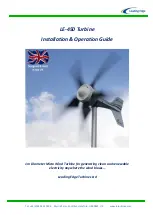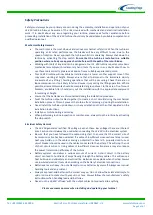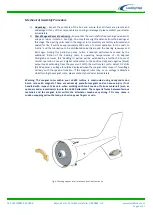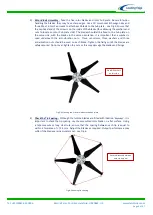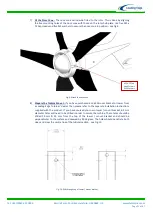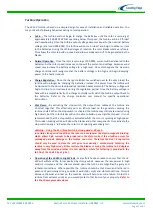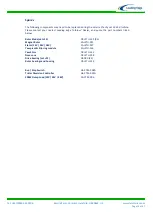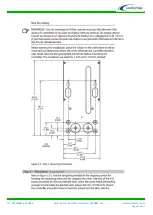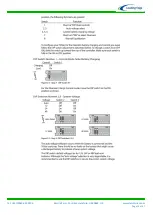
Tel: +44 (0)845 652 0396
Skyrrid Farm, Pontrilas, Hereford. HR2 0BW. UK
www.leturbines.com
Page 14 of 47
Run / Stop Switch - A simple switch arrangement can provide a safe and easy way of
stopping the turbine for maintenance. Leading Edge Turbines can supply a switch which is
best for this purpose. As the switch is thrown, the batteries are disconnected and the
turbine is ‘shorted’ reducing the blades to a slow rotation. Refer to the generic wiring
diagrams.
If the cables you are using don’t easily fit into the run / stop switch terminals, the cable
can be reduced to 4mm2 or 2.5mm2 before entering the run / stop switch. The cable can
then be increased again to its previous size after the switch and this will have a
negligible effect on volt drop.
Charge Controllers – We recommend Tristar controllers for hybrid wind/PV systems as this
allows you to set the regulation voltage very accurately. The Tristar should be used in
Diversion mode along with a suitable Dump load. Please see Appendix 1 for details on
wiring and configuring the Tristar diversion controller.
‘Hybrid’ Systems - The LE-450 turbine can be used in parallel with PV panels. We
recommend that the PV panels are wired independently with a separate charge controller
specifically designed for use with them and connected in parallel with the battery bank -
see Fig-13. The Tristar diversion charge controller can then be configured to regulate at a
slightly higher voltage than the PV charge controller - This will prevent the charge control
systems for interfering with each other.
Installation on Yachts with shore power & engine alternator power sources- When
installed on a sailboat, the LE-450 may be required to work alongside shore power systems
and engine alternators. In these cases, it is important to ensure that the Tristar charge
controller does not unintentionally ‘dump’ power from the shore power or engine
alternator. This can be prevented by ensuring that the regulation set points on the shore
power system and engine alternator are set below the regulation points of the Tristar
diversion charge controller. This means that power from the shore power system and / or
engine alternator will never be unintentionally ‘dumped’ through the dump load. If it is not
possible to set the regulation points of the shore power / engine alternator below that of
the Tristar (or similar charge controller), then the system should be wired in accordance
with Fig 14 on Page 16 and the stop switch should be activated when the engine alternator
or shore power system are in use. This will disconnect the diversion charge controller
during use of shore power / engine alternator and will prevent unintentional dumping of
power from these sources.
Please refer to the following wiring diagrams as a guide.
Summary of Contents for GA-LETU-016
Page 47: ......

